TweakTown’s Rating: 85%

The Bottom Line
While not using any premium materials, the Dell Inspiron 14 does really well as a low-cost student laptop or if configured correctly as an entry-level business solution.
Pros
- + 2-in-1 touchscreen design
- + Upgradable storage
- + Upgradable memory
- + Decent keyboard and trackpad
- + White backlit keyboard
Cons
- – Performance lower than expected
- – Battery life
- – Thermals
Should you buy it?
avoidConsiderShortlistBuy
Introduction, Specifications, and Pricing
Alongside the XPS platforms, Dell has several other platforms catering to each market. For the entry-level, Inspiron has held down the fort for many years with standard form factor notebooks and 2-in-1 touchscreen platforms. The latest lineup is the 7420, a platform built on Intel’s 12th Gen U series processors.
Specifications
The new Inspiron 14 can be configured on Dell’s website in several ways. For this review, our unit was outfitted with the Core i7-1255U, a 2+8 PE design for a complete core thread design of 10/12. It has a boost frequency of 4.7GHz and is paired with 16GB of DDR4.
I/O for this design includes multiple USB-C, SDXC Card readers, HDMI and USB-A. Internally, Wi-Fi is powered by the Intel AX211 chipset offering 6e capabilities to this model.
The display uses the new business 16:10 aspect ratio with a resolution of 1920×1200, touchscreen, and is fully convertible to tablet mode. Additionally, Dell offers the Active Pen to make this a note-taking beast.
The Inspiron 14 7420 pricing in the configuration mentioned above retails at $1049.99.

Dell Inspiron 14 (7420) 2-in-1 Touchscreen Laptop
| today | yesterday | 7 days ago | 30 days ago | ||
|---|---|---|---|---|---|
| $861.44 | – | – | |||
|
* Prices last scanned on 9/28/2022 at 3:38 pm CDT – prices may not be accurate, click links above for the latest price. We may earn an affiliate commission. |
|||||
Notebook Overview
Dell Inspiron 14 Overview
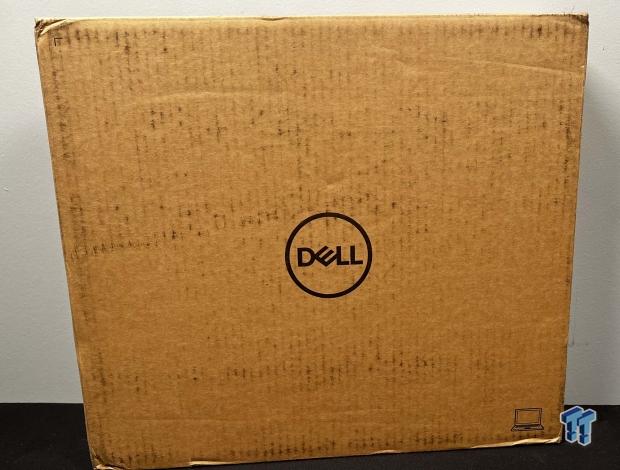
VIEW GALLERY – 26 IMAGES
The Inspiron 14 arrived inside a standard cardboard box.
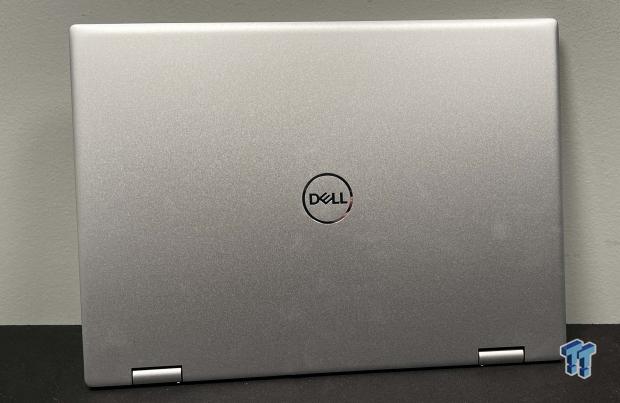
Unboxing, the Inspiron was delivered in the Platinum Silver colorway, with the Dell logo chromed and embossed into the lid.
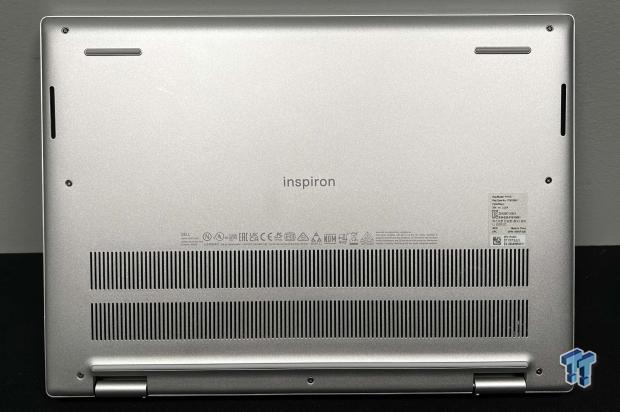
The bottom of the Inspiron offers significant cooling along the bottom with two rows of venting to pull air into the unit.

On the right side, we have the card reader and USB-A port. You will find the 3.5mm audio jack tucked away in the corner.

On the left, we have an HDMI port and two USB-C ports supporting power delivery and DP over USB-C.
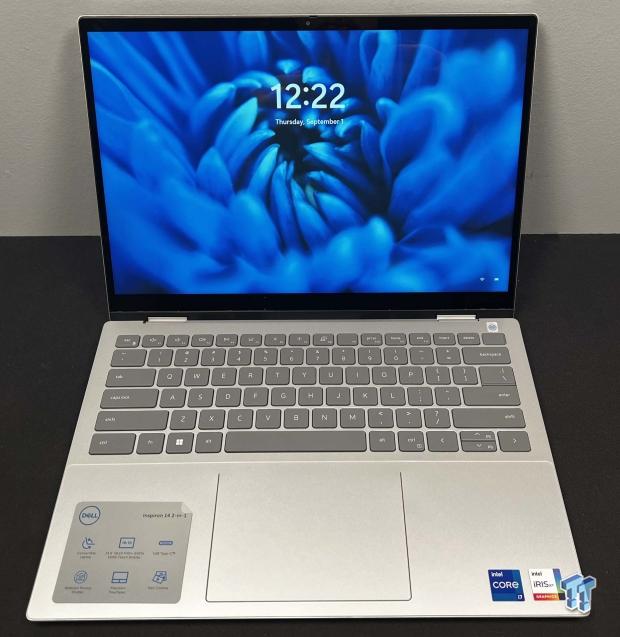
Opening the Inspiron, the trackpad is centered in the chassis, with the keyboard lying nearly flat. It is backlit, white only. The display has almost no physical bezel, while a digital bezel does outline the panel. At the top is the camera, which does offer a privacy slider.
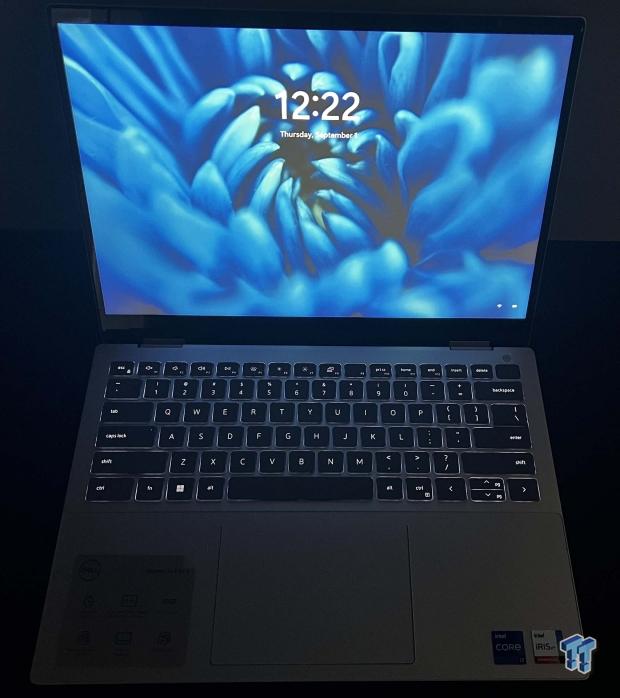
Turning down the lights, we peak at the LED backlighting in white.
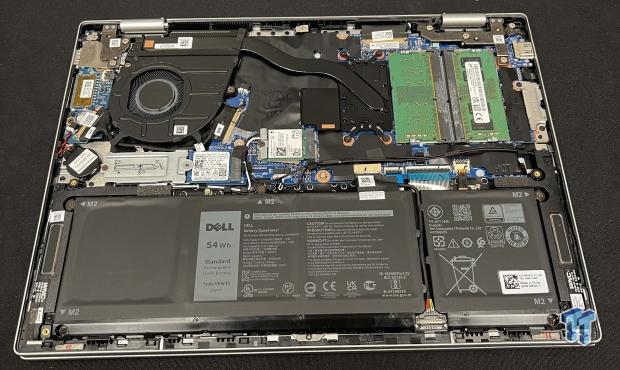
Peeling back the cover, the battery is a two-piece solution offering 54Wh. Up top, we have the motherboard, and single heat pipe cooling pushed to the left. The memory slots allow for upgrades to the DDR4 along with NVMe far left and Wi-Fi in the center.
BIOS/UEFI and Software
UEFI
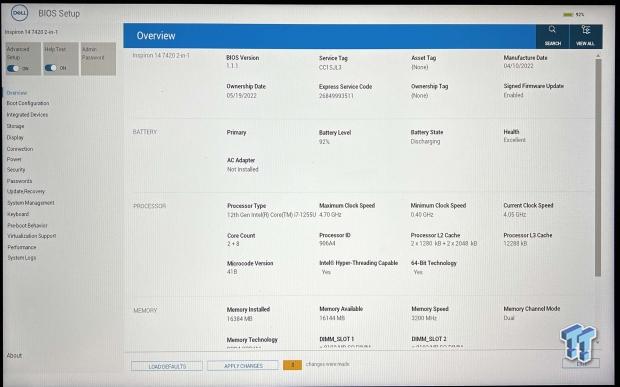
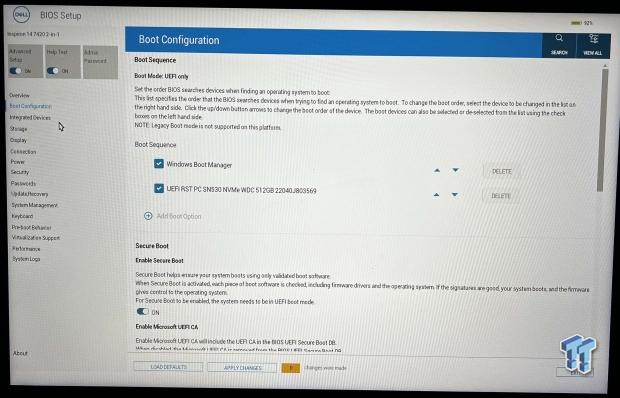
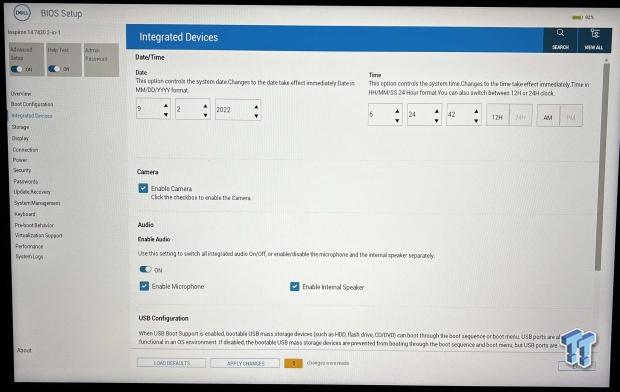
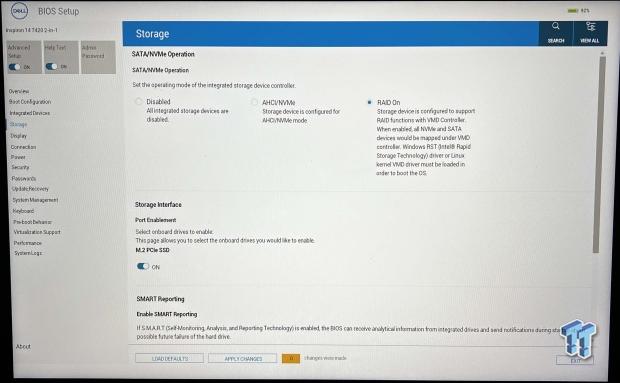
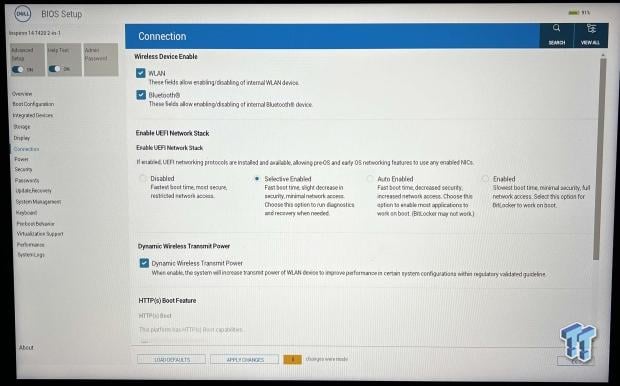
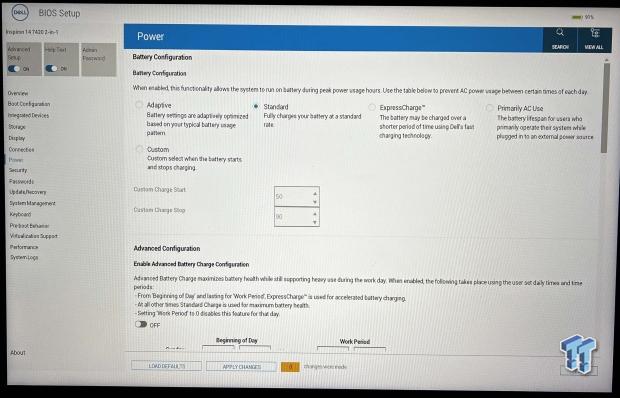
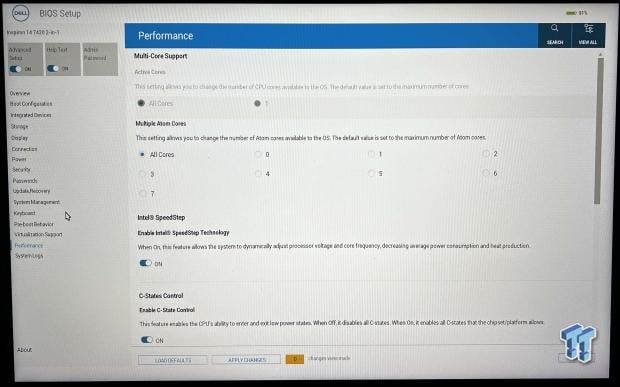
The Dell BIOS offers a solid amount of configuration apart from overclocking controls. Starting from the first menu, we have hardware information, including CPU, memory, and Dell-specific information.
You can then move into the boot manager to handle how the machine loads up and integrate the device to manage things like the camera, audio, and Thunderbolt configuration. Further down the menu system, you will find options for NVMe storage config alongside Wi-Fi and wireless radio controls.
Software
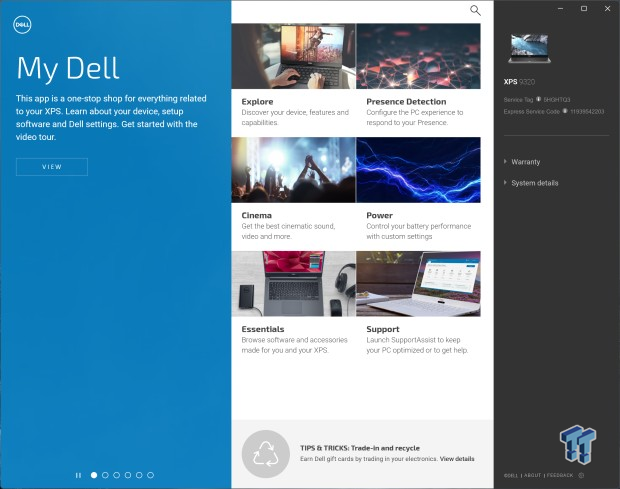
The software is My Dell; this includes support and warranty control and options for configuring presence detection, audio, and power.
System/CPU Benchmarks
Cinebench
Cinebench is a long-standing render benchmark that has been heavily relied upon by both Intel and AMD to highlight their newest platforms during unveils. The benchmark has two tests, a single-core workload that will utilize one thread or 1T. There is also a multi-threaded test that uses all threads or nT of a tested CPU.
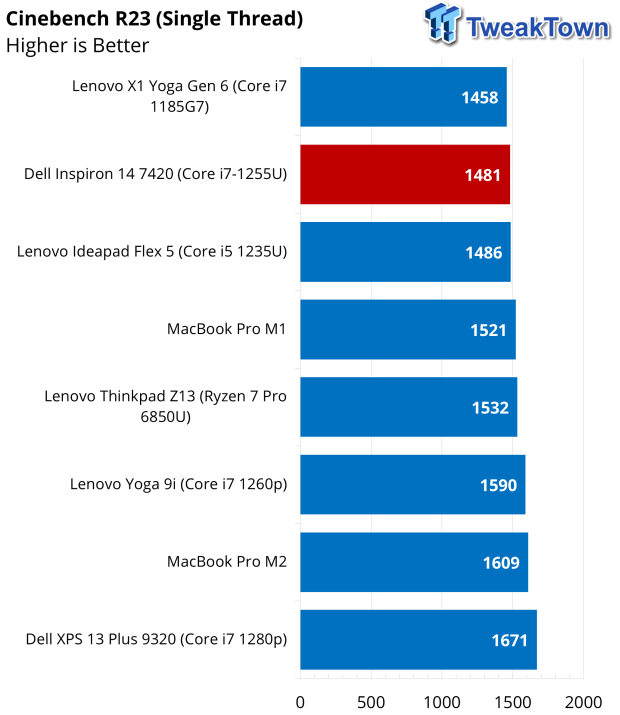
The Inspiron 14 did well but couldn’t surpass the Ideapad in a single thread. The Inspiron scored 1481.
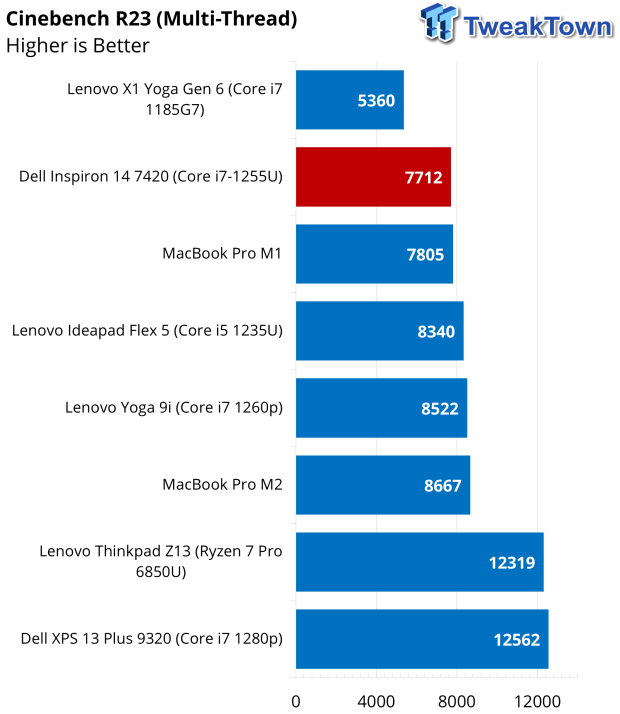
Multi-thread scored 7712 for the Inspiron, just behind the M1 MacBook Pro.
AIDA64 Memory
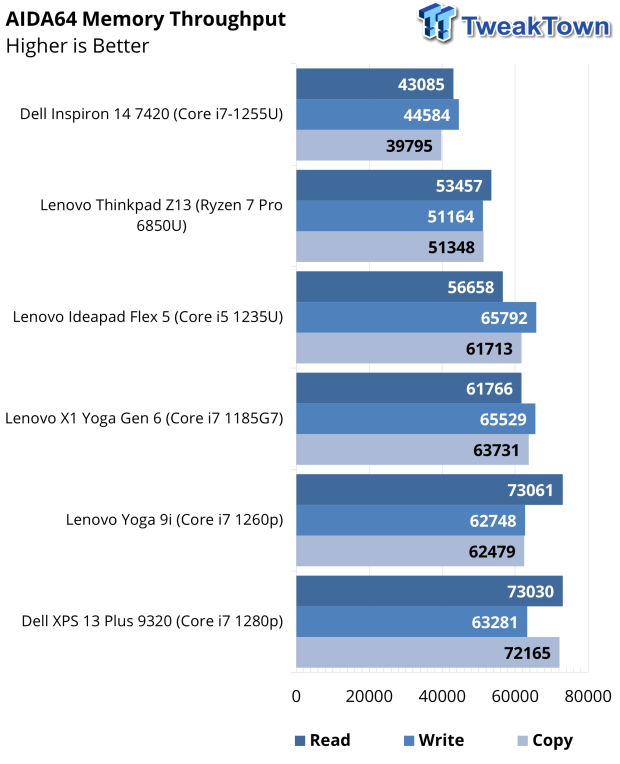
The Inspiron had the lowest memory performance of any notebook tested, likely due to its DDR4 3200 going up against DDR5 and DDR4 soldered units that typically run 4200MHz or higher.
BAPCo CrossMark
CrossMark™ is an easy-to-run native cross-platform benchmark that measures overall system performance and responsiveness using real-world application models. CrossMark™ supports devices running Windows, iOS, and macOS platforms.
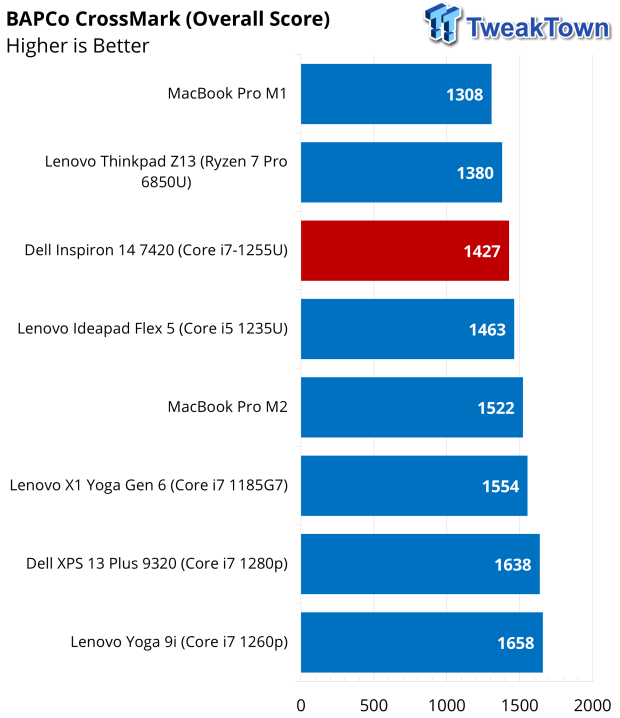
CrossMark pushed the Inspiron past the Z13 from Lenovo with an overall score of 1427.
UL Procyon
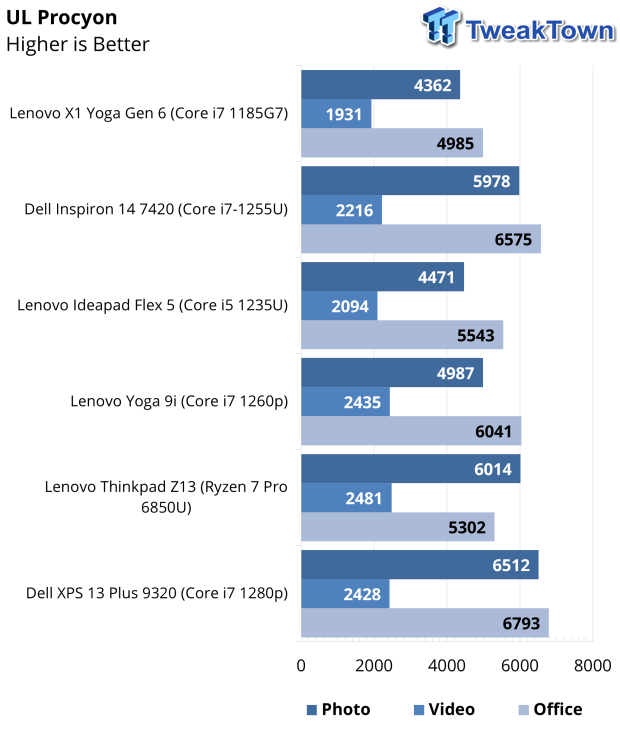
Procyon showed the Inspiron in a much better light, outscoring the Ideapad by a fair margin in all three workloads.
3DMark
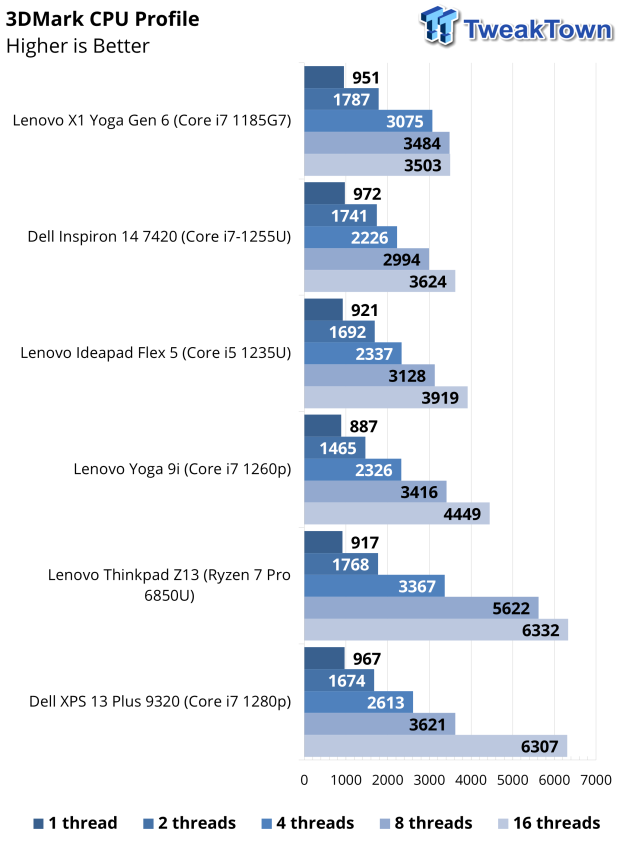
CPU Profile offered a single thread score of 972 and a sixteen thread score of 3503.
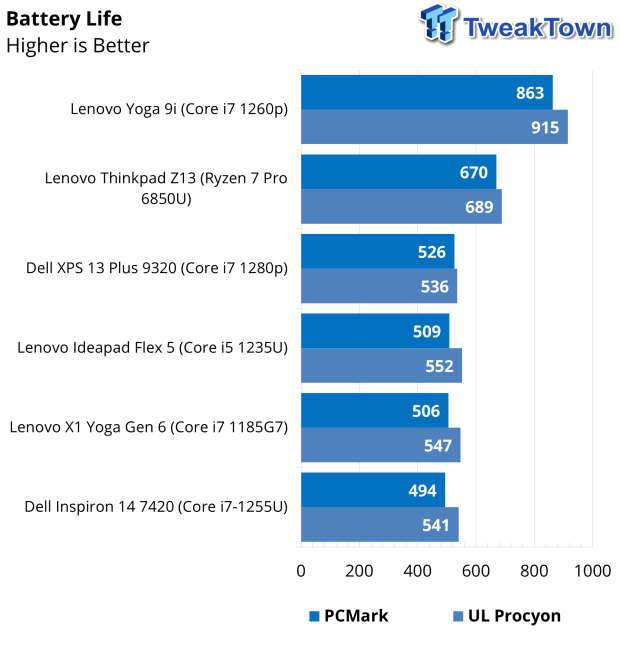
Battery testing gave the Inspiron 494 minutes with PCMark Modern Office Testing, while the Procyon offered 541 minutes of battery life.
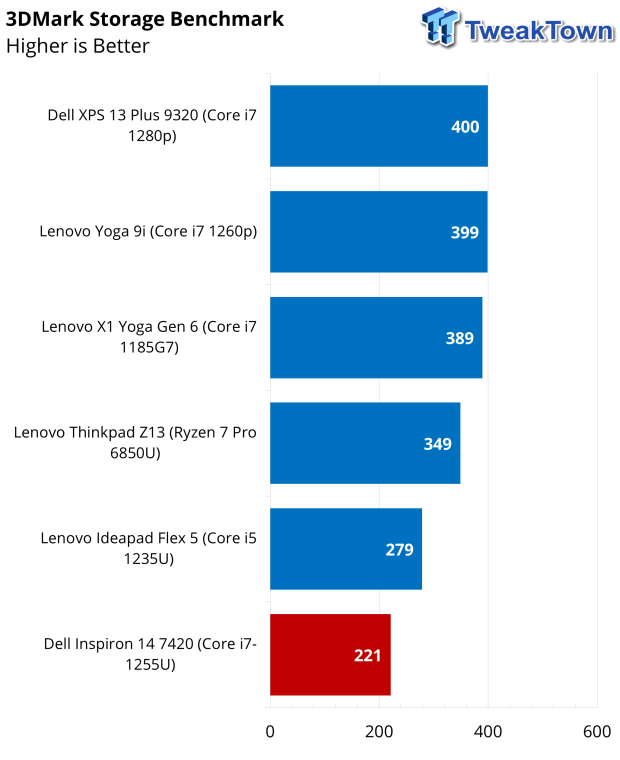
Storage was the lowest we have seen to date, with bandwidth coming in at 221 MB/s.
Value and Final Thoughts
Value
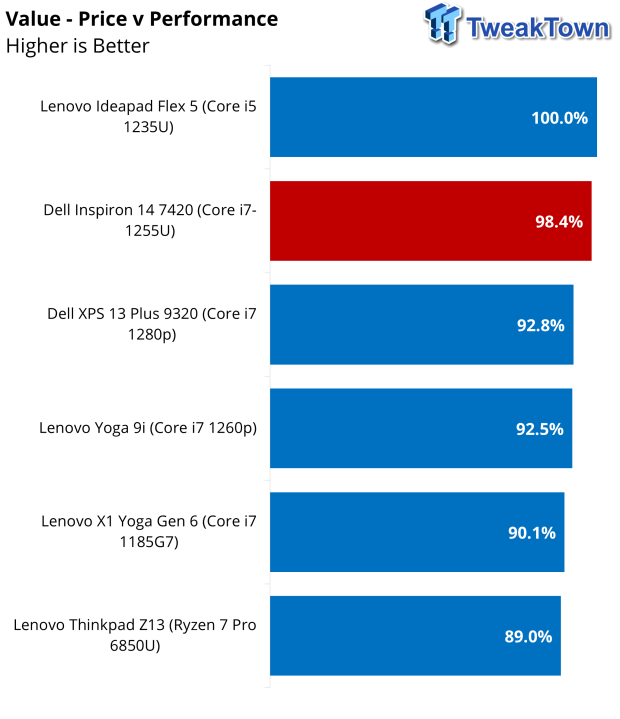
With value, we take the notebook’s performance in several testing areas and put it against the cost at the time of writing. The Inspiron 14 does remarkably well, scoring 98.4% and second to the Ideapad Flex.
Final Thoughts
I have to be honest. I never used an Inspiron platform until this unit landed on my doorstep. Being a 2-in-1, I had an idea of what the notebook would offer, and based on the platform and previous experience with the Ideapad Flex, I had an idea of where the performance would land too. What I wasn’t expecting was a high-quality keyboard and touchpad that seemed like they were meant for the XPS lineup, not the entry-level Inspiron 14.
The keyboard’s feel is nearly Thinkpad X1-level quality, and it has a fantastic return on each key and perfect ambiance from the backlighting. The trackpad is very smooth with a low tactile click, not perfect, but certainly better than many platforms that run through the lab.
The performance of this system was hit and miss. I did expect the 1255U to outperform the 1235U in the Ideapad, but thermals play a huge role in getting the best performance out of a system, especially when it’s low profile. For the Inspiron, it appears it could use a better thermal solution, as the CPU could not maintain its peak boost for any length of time, allowing the weaker 1235U to do better in most scenarios. The Inspiron 14 can be configured with the 1235U, possibly for a more efficient overall build.
Pricing is always hard to justify, although in the month I have had the Inspiron 14 on my desk, Dell.com has dropped the price to $849.99 a few times. So if you are in the market for a 2-in-1 and are looking at the Inspiron, it’s only a matter of time before the price drops again. With that, the Inspiron is one of the better overall value notebooks. Based on its performance in office, photo, and video workloads, it’s second only to the Ideapad Flex.
If bought during a price drop, it’s likely the best of the two platforms.
.